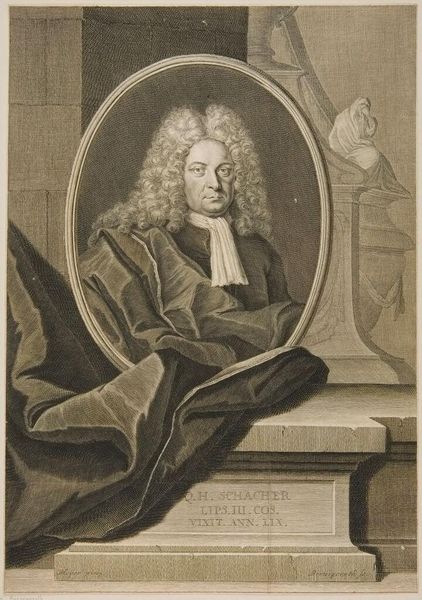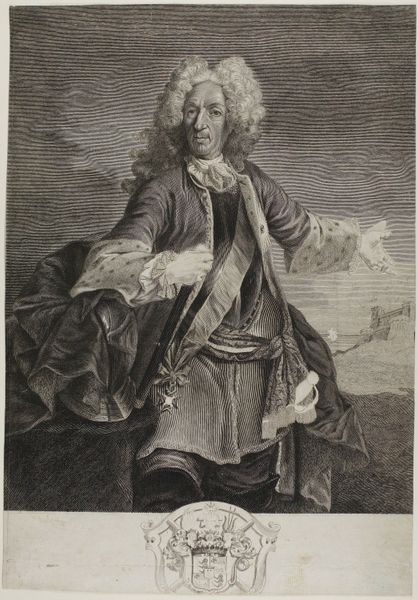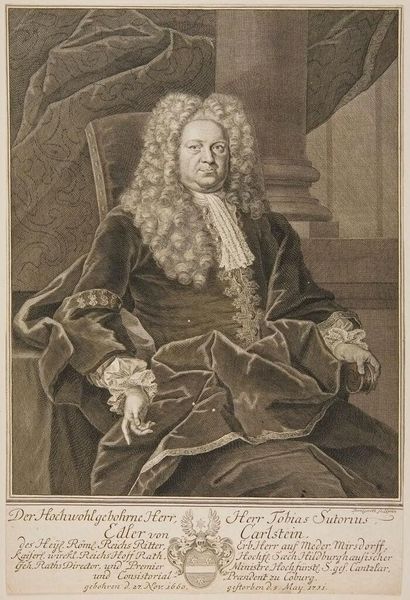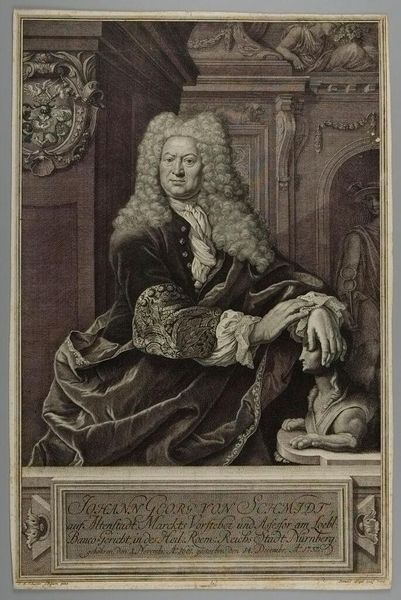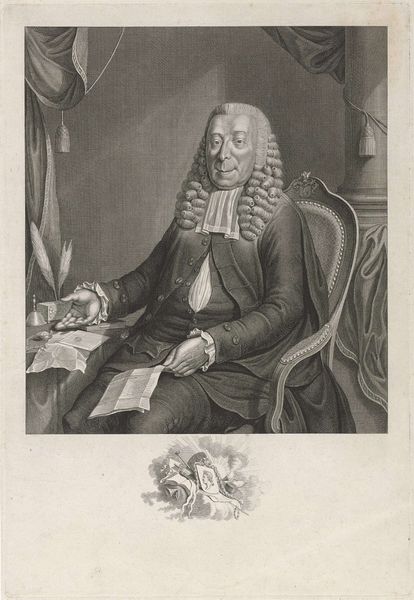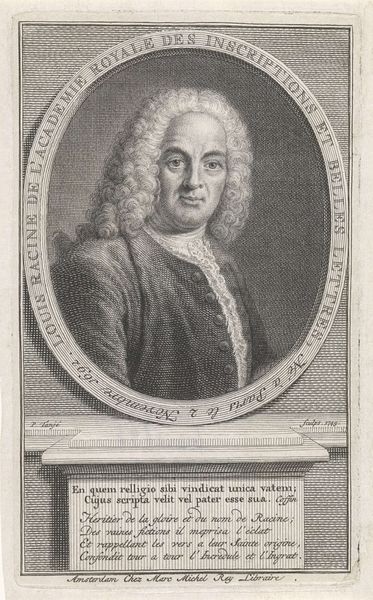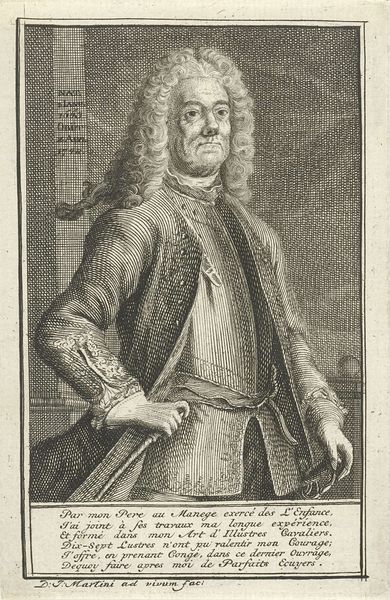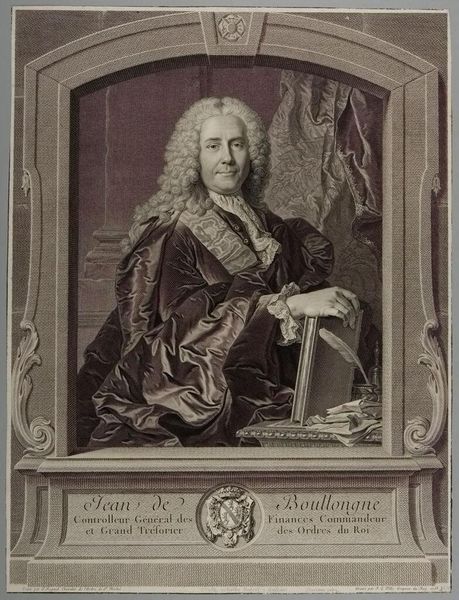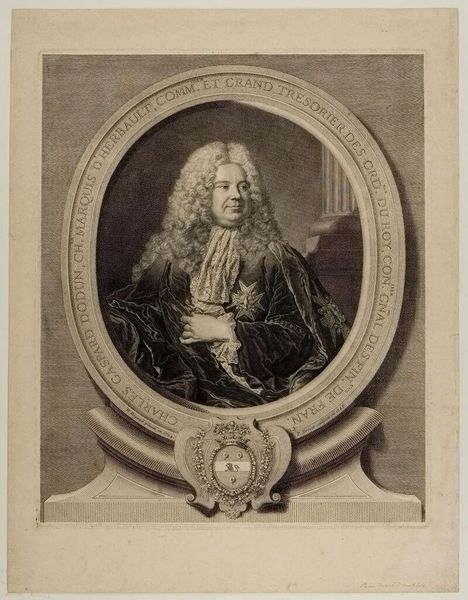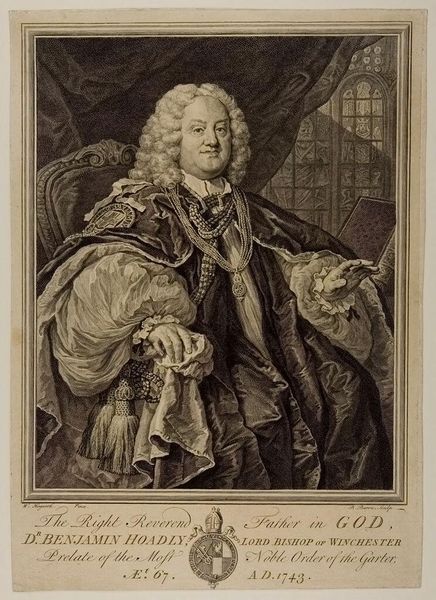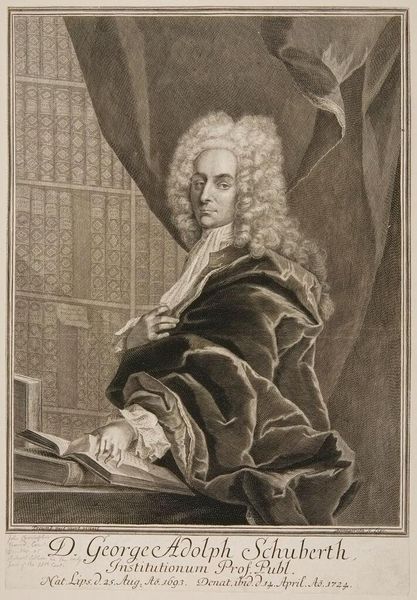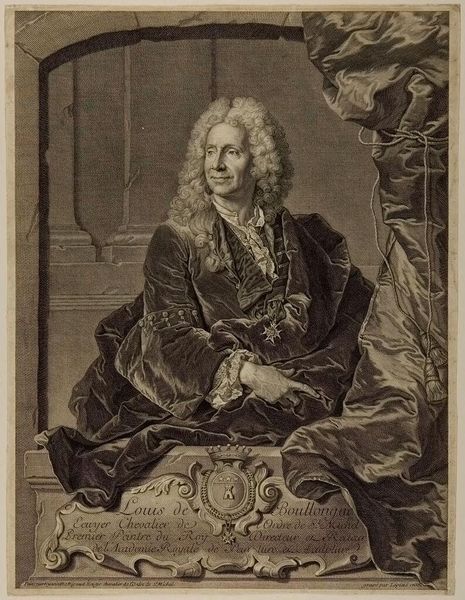
Johann Noa Buirette von Oehlefeld c. 18th century
Copyright: CC0 1.0
Editor: This portrait of Johann Noa Buirette von Oehlefeld, by Bernhard Vogel, is striking. The details in the clothing and the subject's pose give a sense of wealth and status. What stands out to you about the materials and their creation? Curator: Consider the engraver's labor, the copper plate, the ink, and the paper. Each speaks to a specific social and economic context. The paper itself, its quality, and source, reflects trade routes and manufacturing processes of the period. How do you think this medium influenced the distribution and reception of the image? Editor: That's fascinating. So, the materials used and the printing process itself gave it reach beyond just the elite? Curator: Precisely. The material accessibility, relative to a painted portrait, allowed for wider, albeit still limited, circulation. This hints at a shift in the consumption and dissemination of images of power. Editor: I never thought about a portrait in terms of the material used to create it. Curator: Seeing art through the lens of labor and materials reveals much about its creation and consumption. This understanding allows us to question the traditional hierarchy between art and craft.
Comments
No comments
Be the first to comment and join the conversation on the ultimate creative platform.
